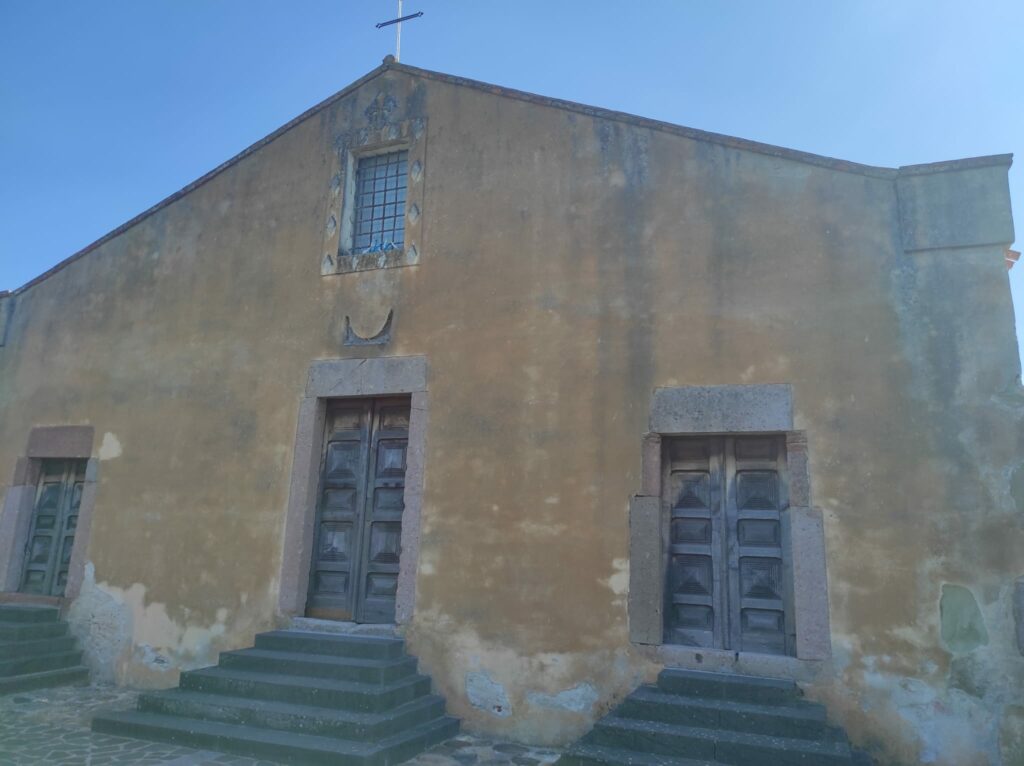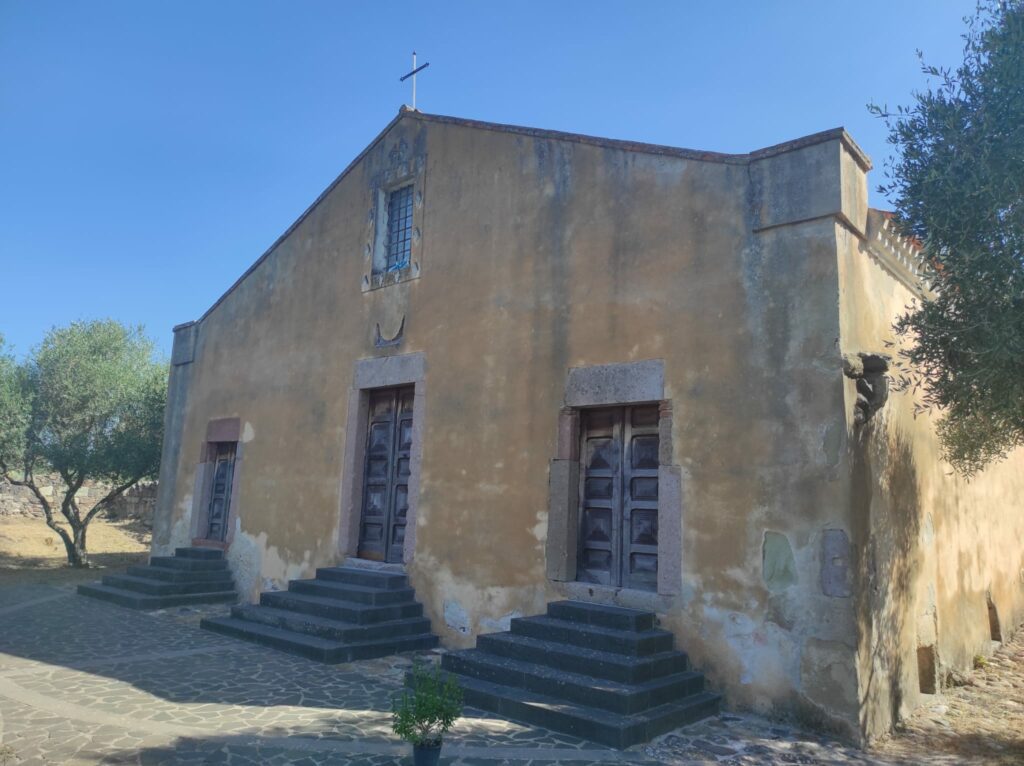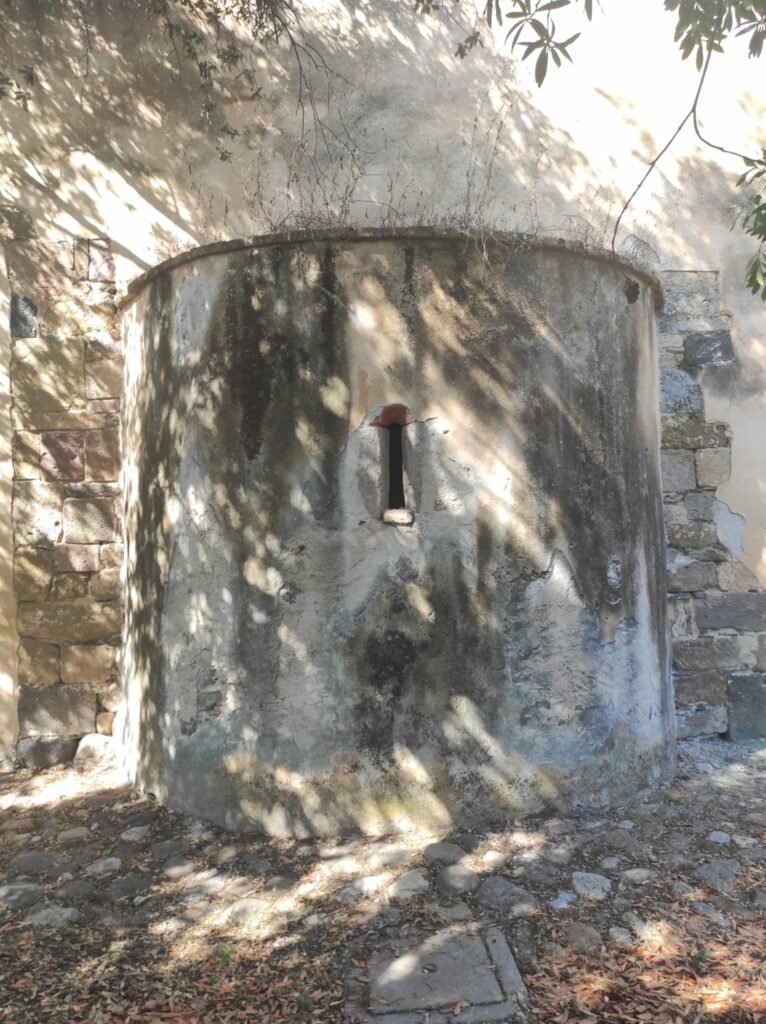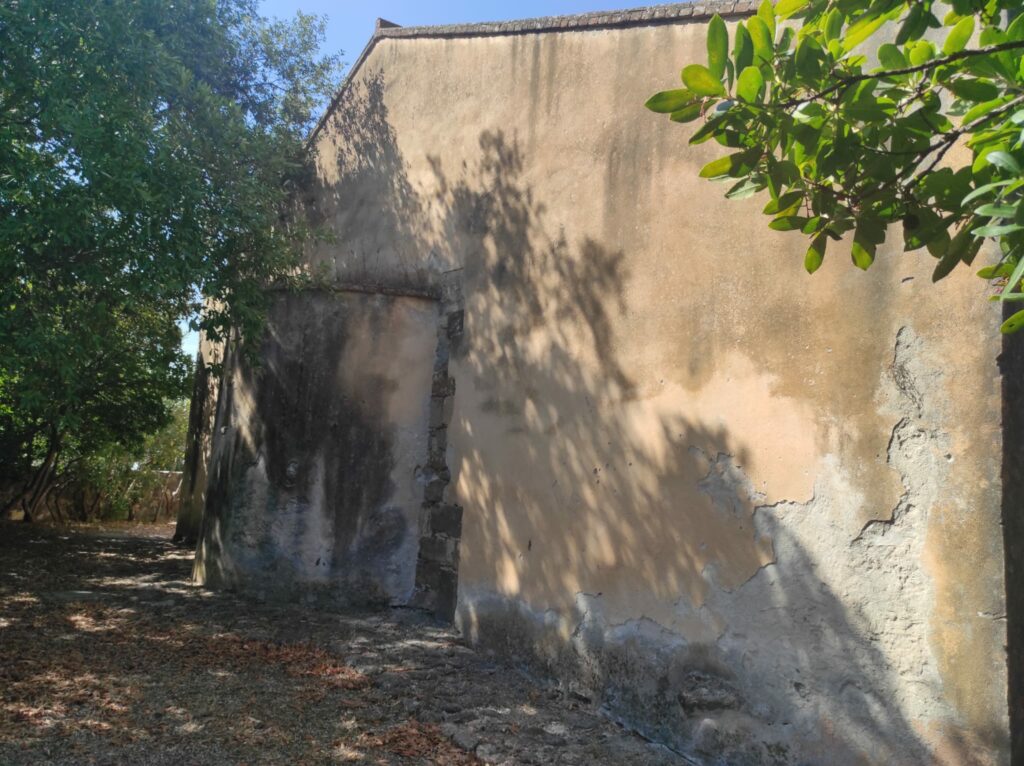Chiesa di San Marco
Chiesa di San Marco
The church of San Marco Evangelista is probably the oldest building of worship in the Ollastra parish. There is no certain information on the date of construction of the building but, at present, two distinct architectural phases can be identified: the first dates back to the Romanesque period (second half of the 12th century), the second to the modern period (18th-19th century). The layout of the Romanesque phase can be traced back to a simple single-nave hall, probably with a wooden roof; the absence of corner pilasters suggests that the walls were smooth, according to the technique used by the workers from the Camaldolese abbey of S. Maria di Bonarcado (1110- 1146), also present in the churches of S. Gregorio di Solarussa, S. Pietro di Bidonì and S. Nicola di Sorradile. From the Romanesque phase, the basalt and trachyte ashlars that make up the external part of the apse, illuminated by a single-lancet window and facing east, are still visible. From the modern phase belongs the enlargement of the single nave into three aisles, realised by knocking down the walls of the previous phase and adding an aisle on each side.
The interior decoration, unfortunately, is limited to only a few recurring geometric motifs along the
arched partition arches on quadrangular base pillars.
Underneath the church building is a crypt; it is a semi-pogean space whose
architectural features can be dated from the 4th to the 7th century A.D. (phase
pre-Romanesque or late Roman). It is accessed via an external staircase, located on the left side of the
church and presents itself as a low, airy room characterised by brick masonry.
The presence of Romanesque churches with crypts is rare in Sardinia; two examples are
citing for similarity: the church of S. Lussorio in Fordongianus and the church of S. Lucifero in Cagliari.
The most probable hypothesis is that the semipogeic environment does not originate with religious connotations but is
attributable to a warehouse, belonging to a rustic villa, used for the collection and storage of
foodstuffs; or it could be a spa environment, as the wall apparatus present
was particularly used for that type of structure.
The site of the church of San Marco may correspond to the 'Domo d'Oiastra' mentioned in a deed of the
Condaghe di S. Maria di Bonarcado. In another, dating back to 1223, a 'Donno
Benedetto della Domo d'Oiastra' as an indication that the church belonged to a monastery,
probably Camaldolese, dependent on the Abbey of St Mary of Bonarcado. Another attestation is a 'Sia
de Santi Marcu/i' that we find in the Peace of 1388, as well as a 'Maiore Sia Santi Marci'.









